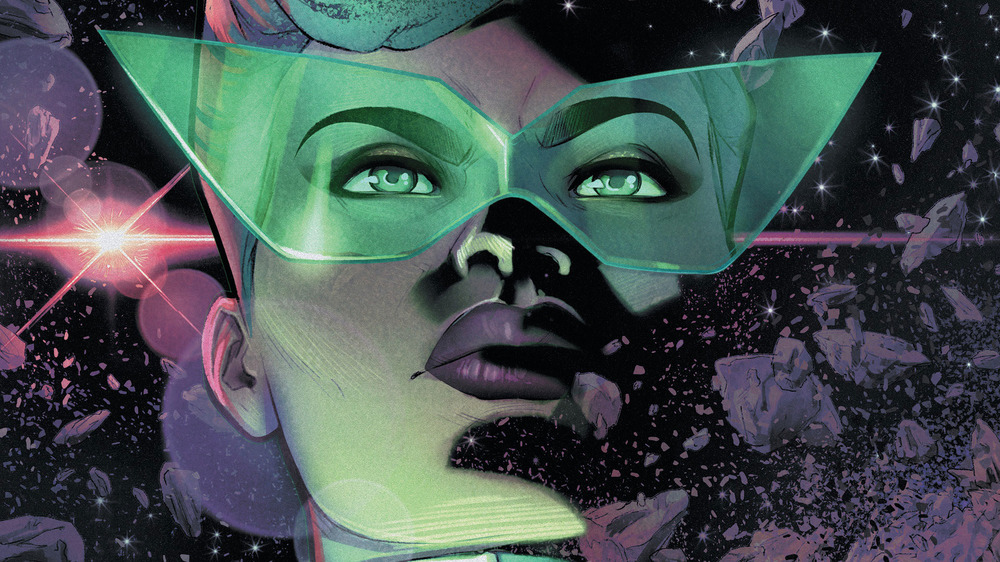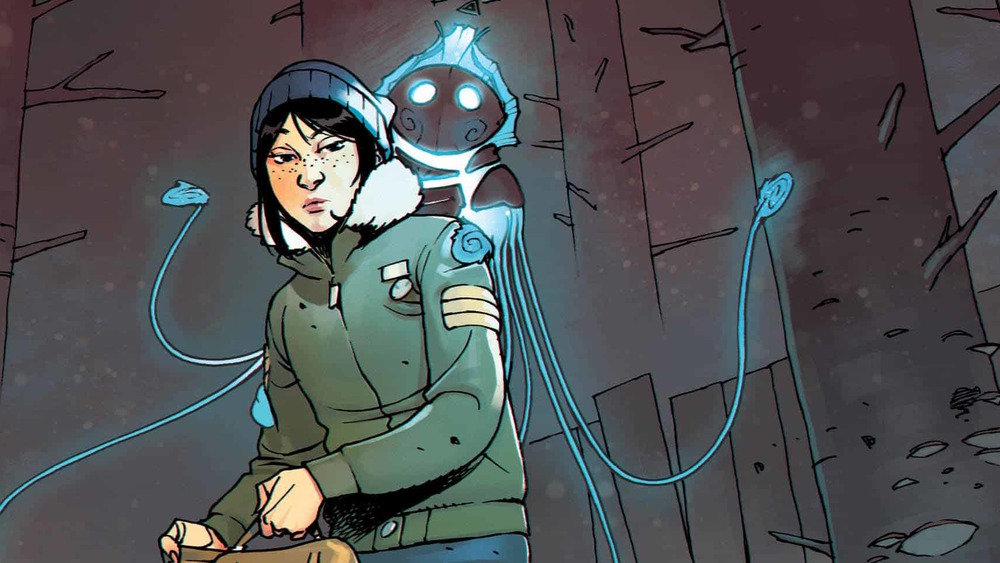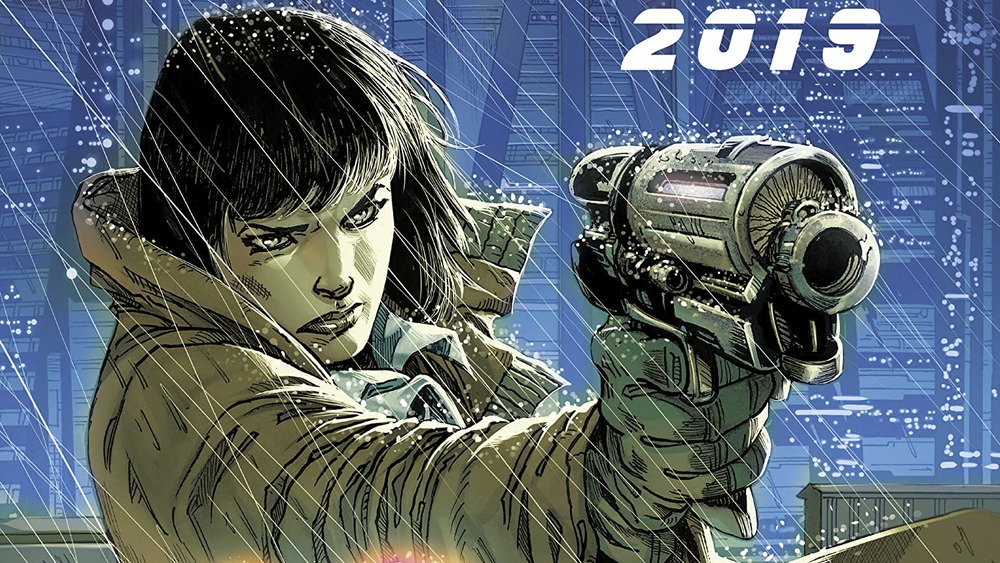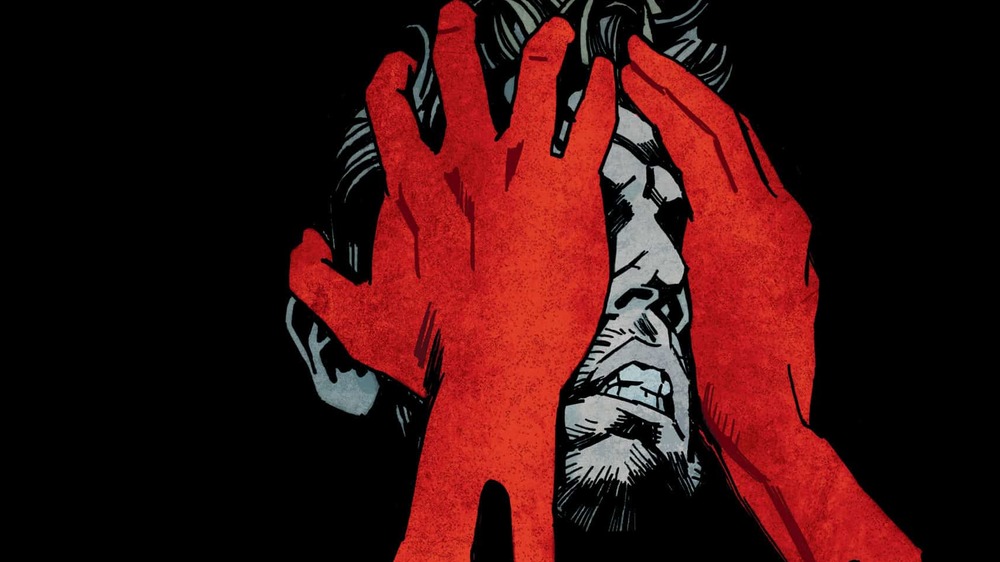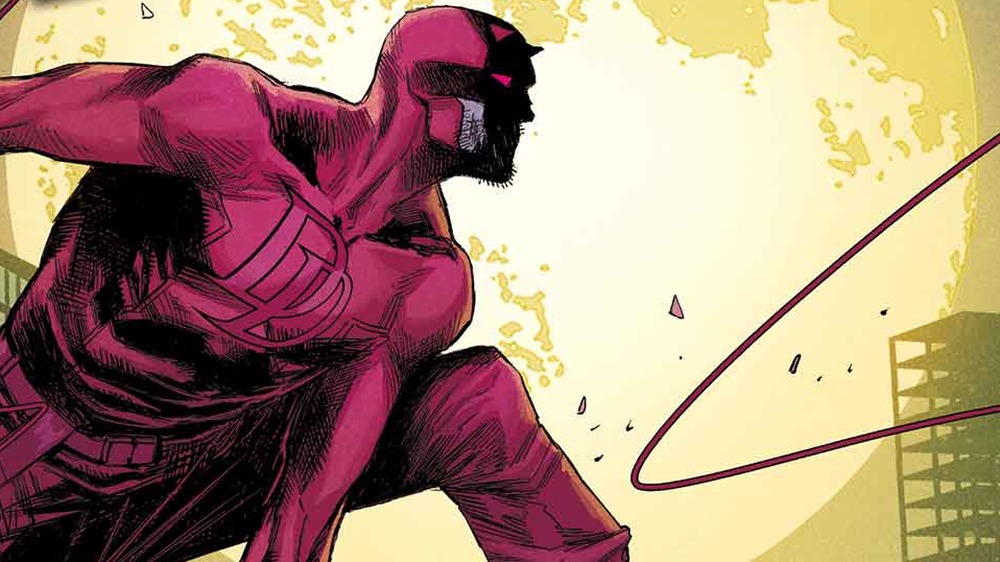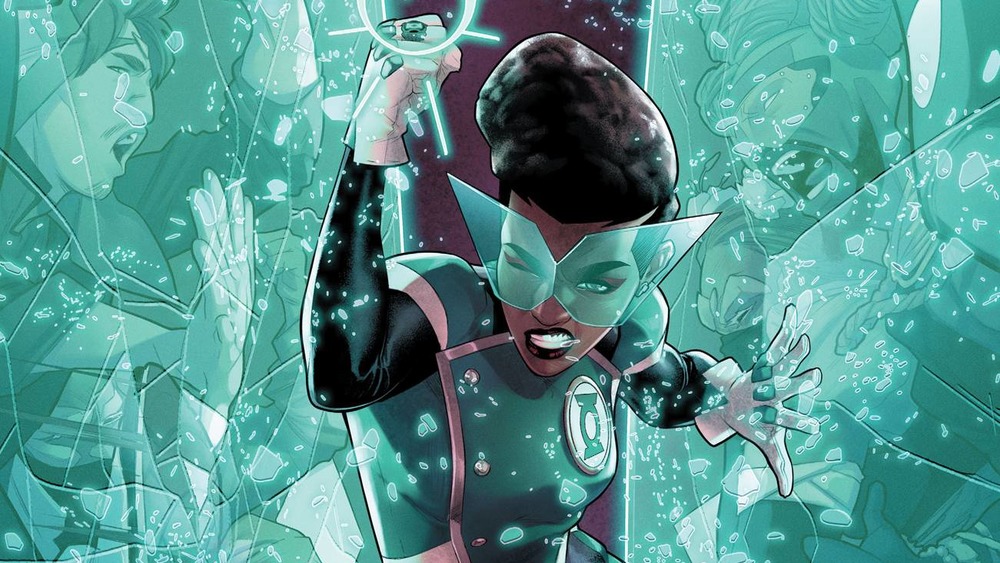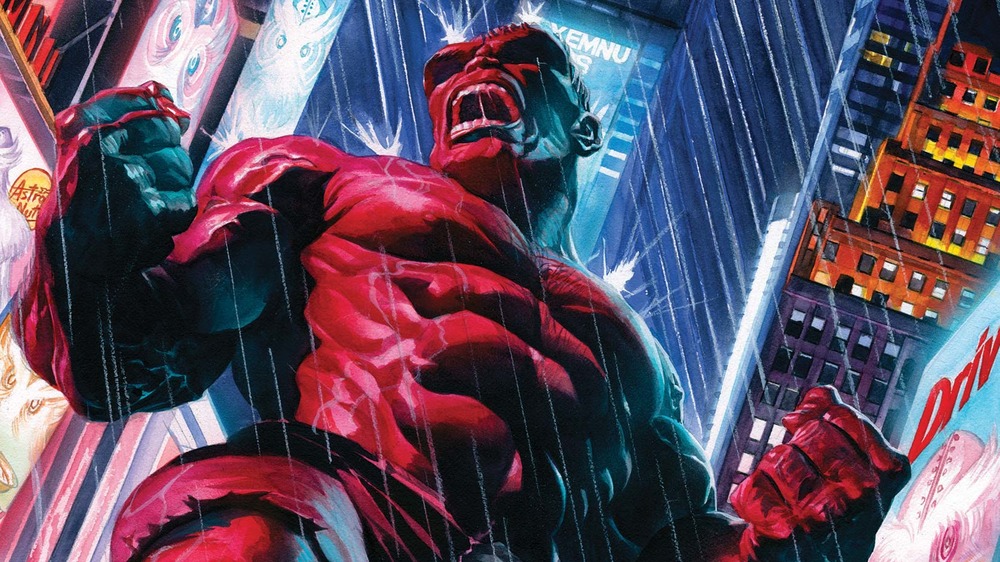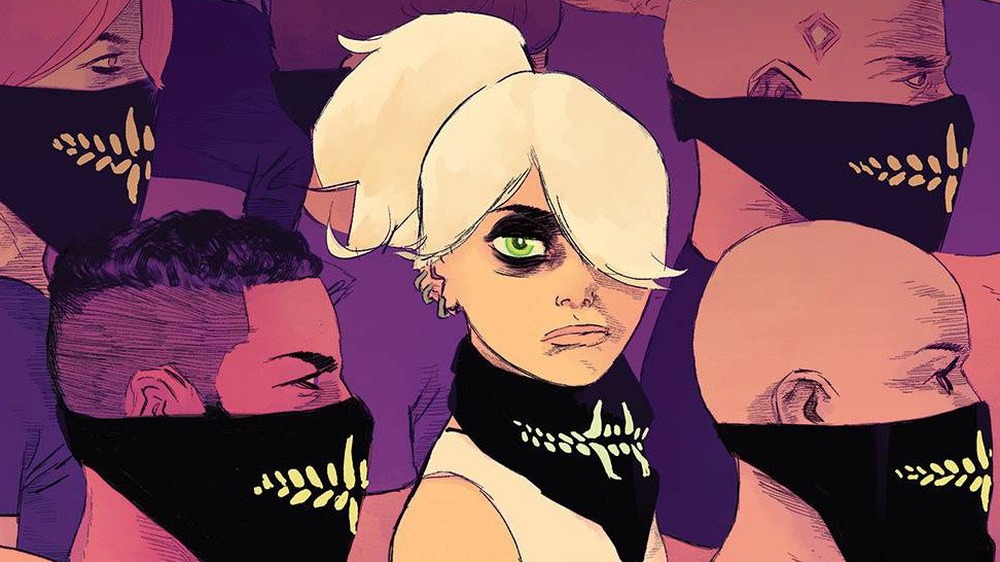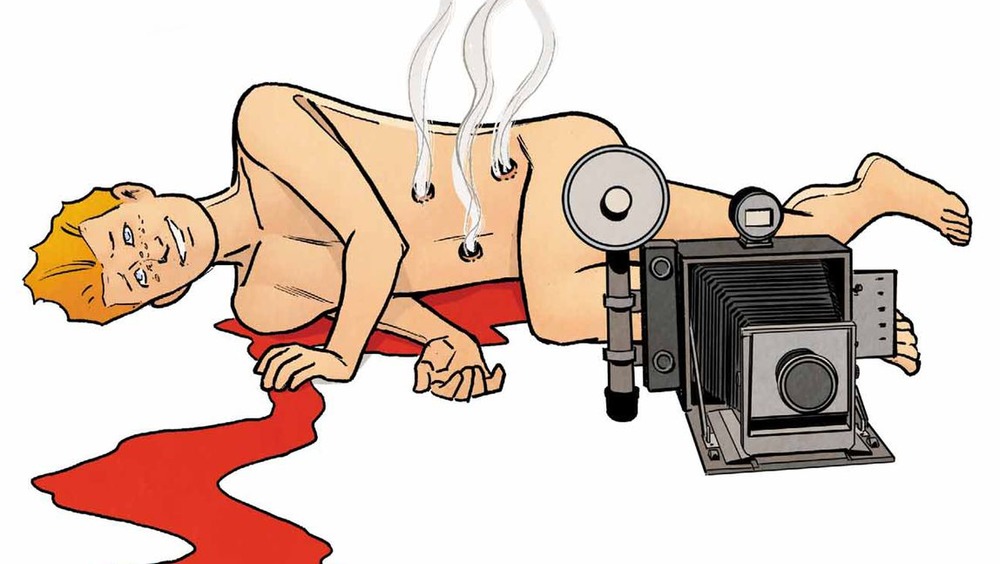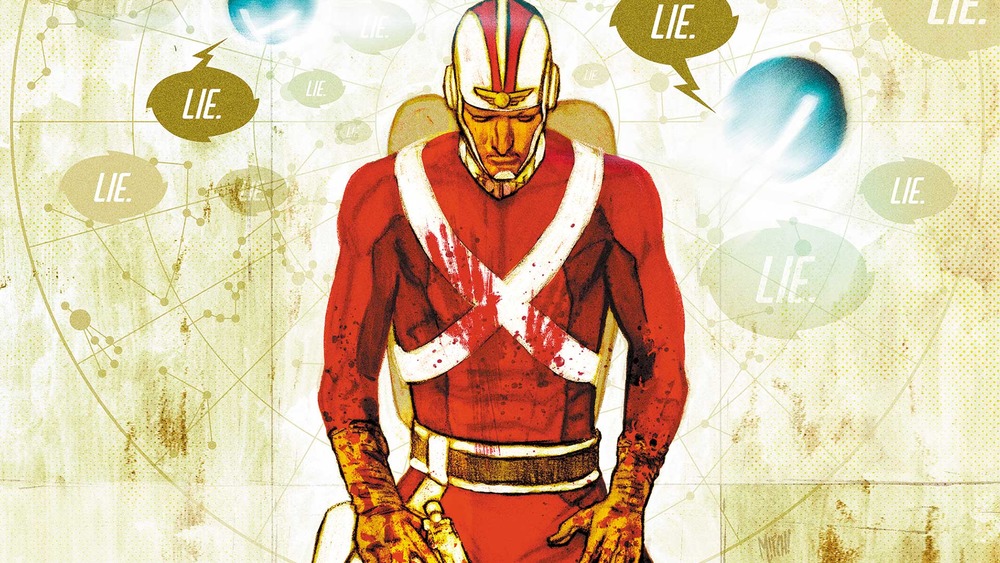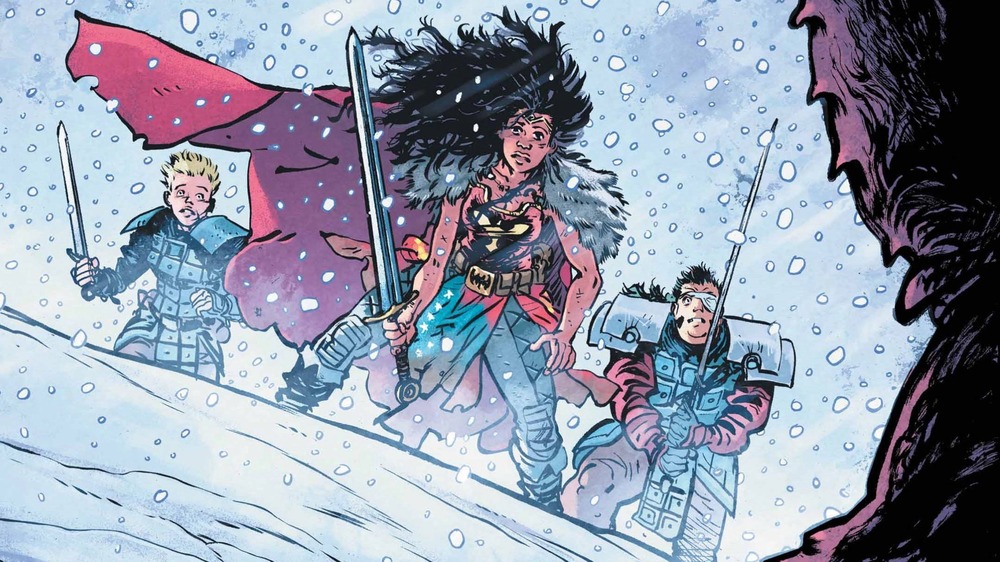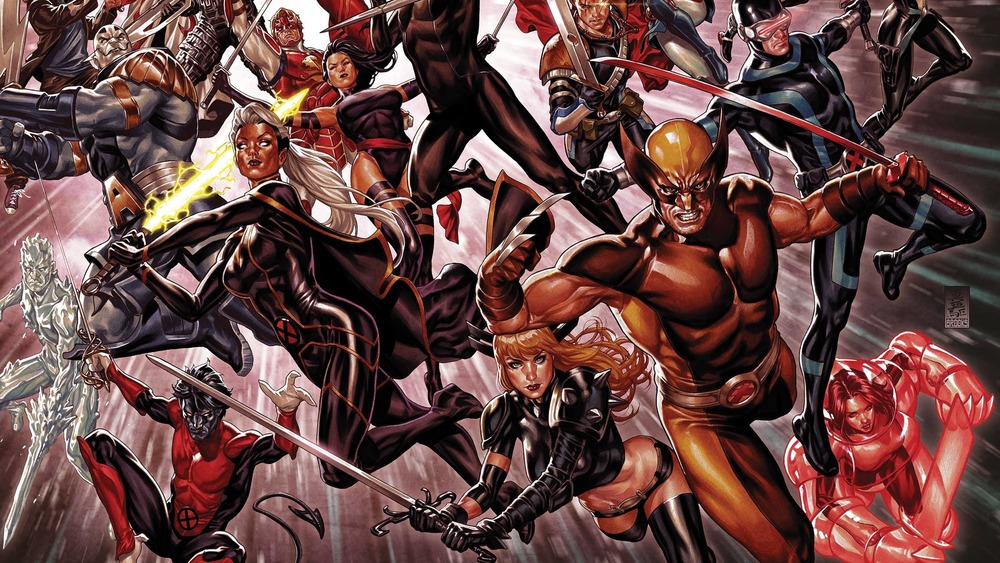Best Comics Of 2020
2020 sure was something, eh?
As you may already be aware, the entire entrainment industry took a historic mauling this year, thanks to the COVID-19 pandemic. Small and mid-sized concert venues closed down in droves. The entire institution of movie theaters is in serious trouble. Comics, meanwhile, basically had to cease publication and distribution from April to June. The sequential stories biz got off comparatively lightly, although victims of August's avalanche of layoffs at DC might push back against that sentiment.
However the business-related numbers shake out, as far as quality reading goes, comics did well in 2020. A heap of Big Two characters found themselves in compelling new circumstances, and plenty of creator-owned titles excelled. Maybe 2020's content doesn't match the newsworthiness of 2019's, but The Walking Dead can't end every year, can it?
What follows are the comics that helped us stay marginally sane during 12 perilous months. For the purposes of this list, we limited our definition of "comics" to series released in the traditional floppy, monthly-issue format. Graphic novels like Allie Brosh's Solutions and Other Problems and Slaughterhouse-Five by Ryan North and Albert Monteys are still definitely worth your time.
Alienated
The New Mutants, one of the only comic book movies released in 2020, shoots for a Breakfast Club-meets-horror vibe that never quite balances out. Appropriately, a successful version of that same idea showed up around the same time the movie debuted, in a different medium.
We like to describe writer Simon Spurrier and artist Chris Wildgoose's Alienated as E.T. The Extraterrestrial blended with Akira, with maybe a hint or two of FLCL. But reducing the story of three kids named Sam and their adorable, terrifying alien pal to a list of influences does it a major disservice.
Spurrier conjures high-stakes emotional moments out of his charges, despite the relatively short six-issue period we spend amongst them. According to Alienated, person-to-person interactions are an inevitable source of trauma — and an absolute necessity for survival. Needless to say, it's a fitting read for 2020. Alienated explores fractured families, imagines fabulous alien landscapes, and satirizes edgelord YouTubers with insight, precision, and (surprise!) a sizable helping of empathy. It's too late to fix The New Mutants, but maybe someone at Marvel should call up writer Simon Spurrier, seeing as how he does alright with angst-ridden super teens in Alienated. Oh wait — they already have. As usual, Jonathan Hickman's three steps ahead of us.
Blade Runner 2019 and Blade Runner 2029
Assuming movie theaters continue to exist, the disappointing financial returns of Blade Runner 2049 preclude any realistic possibility of another Blade Runner sequel. That's a bummer, but Titan's Blade Runner books, Blade Runner 2019 and Blade Runner 2029, from writers Michael Green and Mike Johnson and artist Andres Guinaldo, should tide over anyone jonesin' for a fix of cyberpunk existentialism, constant rain, and conflicted, trench coat-clad protagonists. Despite the absence of Rick Deckard, K, Rachael, Niander Wallace, and all the other recognizable movie characters, the two series feel tonally and visually synced with the films' dreary, neon world. We certainly cannot say the same about every licensed comic and its source material.
Despite an occasionally-malfunctioning bionic back, Aahna "Ash" Ashina may be the most cold-blooded blade runner in Los Angeles. An ethical dilemma eventually sends her off the job and on the lam, but unlike Deckard, Ash isn't limited by a production budget or 120-minute runtime. Blade Runner 2019 explores the frequently discussed but never previously seen off-world colonies, and, after years of in-story time pass, returns Ash to the city to tie up loose ends. Fun fact: Writer Michael Green also helped pen Blade Runner 2049, Logan, and, somehow, Green Lantern.
John Constantine: Hellblazer
If someone held a gun to our heads and forced us to pick a comic of the year, we'd point to John Constantine: Hellblazer by Simon Spurrier and artists Aaron Campbell and Matias Bergara, and declare it superior to all other 2020 comics.
Tragically cut off after only 12 issues, this modern-day tale of the reluctant sorcerer sees him struggle amid a dangerous moment in British history. But not every malignant force emerges from supernatural origins. In addition to the usual demons, devils, and other adversaries of that ilk, Constantine takes on xenophobia, nationalism, misinformation, and, on top of all that, the numerous unpleasantries attached to his own legacy. No wonder he hasn't quit smoking.
Campbell generally handles the night-time issues, while Bergara draws the new age-y, occasionally stomach-turning sights of London in the daylight hours. Their work is spectacular, and continually innovative. While there are dozens of vampire comics being produced at virtually all times, how often do we see unicorns in mainstream horror stories? What about mermaids? Or, for that matter, what about mermaids who are also allegories for exploitation under unfettered capitalism?
Daredevil
Back in 2019, Chip Zdarsky's Daredevil felt custom-made for fans of the character's Netflix show. After an attempt to prevent a burglary goes awry, Matt Murdock copes with a moral crisis that definitely would've sustained Charlie Cox's brooding for at least six episodes' worth of television. The combat and conflicts of these issues maintain a hard PG-13 degree of brutality, and stay grounded in the street level-side of Marvel, just like they do on the streaming program. The other characters Daredevil interacts with or mentions are either brand new, appear in his Netflix show, or are Spider-Man.
We're not pointing this out to complain, only to note progress. Mike Murdock — an imaginary scummy twin brother Matt Murdock made up back in the 1960s — is certainly too goofy to exist in a world alongside Jon Bernthal's Frank Castle, right? And yet this year, the series made Mike Murdock an integral part of Daredevil's public deception once more. This demonstrates the series' strength: Zdarsky's Hell's Kitchen has gained its own identity, and is no longer beholden to any previous iteration. Recent developments surrounding one of the Man Without Fear's deadliest foes places our expectations for 2021 high enough to attach a billy club cable to and swing to a nearby building, if one were so inclined.
Far Sector
When it comes to getting the most out of their intergalactic IPs, Marvel's had it all over DC in recent years. To demonstrate this, we don't even need to point out the day-and-night contrast between Guardians of the Galaxy and Green Lantern. The first Guardians did better at the box office than Man of Steel, DC's only solo Superman movie of the era. And the second Guardians movie also beat Superman.
Perhaps the entire spectrum of DC-branded media could take a hint from Far Sector. It could be Green Lantern requires no fixing, only a willingness to embrace the mythos' infinite possibilities. After all, pretty much anyone can wear a power ring and use it to travel pretty much anywhere — why not go a little further afield?
Far Sector, from writer N.K. Jemisin and artist Jamal Campbell, follows Lantern Sojourner Mullein as she attempts to unravel a murder mystery tied to a conspiracy that threatens all who reside within the City Enduring. The City Enduring is a glittering, cosmic municipality where emotions are outlawed, occupied by aliens with species names like The Nah and the @At. Often, when you pick up a Green Lantern comic book, it turns out to be a Hal Jordan story that's pretty much entirely about other, older Hal Jordan stories. Far Sector presents us with a cyberpunk Green Lantern story with timely social commentary, innovative sci-fi ideas, and sleek visuals. It's much more awesome this way.
The Immortal Hulk
Like many of his superhero contemporaries, the Hulk can attribute his versatility to a continuous, decades-long presence in the mass media. Since The Immortal Hulk launched in 2018, Al Ewing and a team of artists led by Joe Bennett have taken full of advantage of this, taking certain attributes of the not-so-jolly green giant to hyper-literal, often disturbing extremes.
The Hulk gets real skinny for a bit. He switches personalities on a routine basis. And most infamously, he gets sliced up into pieces, which are separated into individual jars. Of course, he emerges mostly intact from every ordeal, because, like the title says, he is no long a mortal Hulk. This year's batch of Immortal Hulk sees pop culture's most popular rage monster and his pals take over the remnants of Shadow Base and bask in their access to all the cutting-edge scientific gadgetry their position entails. Hulk winds up in a fight for global sanity against the embodiment of toxic nostalgia, who also happens to be an obscure Jack Kirby creation from 1960. And unless the internet has already spoiled it for you, you'll be pleased to see an arch-nemesis return in an abrupt, jump scare-style reveal that may cause you to pee your pants. The definitive Hulk saga for modern times wraps up in 2021 with issue 50, so let's buckle up for a smashing to end all smashings.
Something Is Killing The Children
Out of the handful of projects James Tynion IV wrote this year, DC's headlining Batman series is the least interesting by a mile. So, professionally speaking, if his lamest thing is Batman, he's had a better-than-okay 2020.
After the early buzz for Something Is Killing The Children convinced Boom! Studios to upgrade it from a limited to an ongoing series and demand for the premiere issue warranted a sixth printing, Tynion unleased yet another horror title: The Department of Truth with Martin Simmonds. As of issue #1, which dropped in September, DoT plays out like a meditation on 20th century American history, charged with the reality-agnostic dark energies of the The X-Files and Twin Peaks: The Return.
But since we'd feel weird about putting two Tynion comics on this list, let's go with SiKtC. Adult readers might assume they've outgrown their instinctive fear of what lurks in the nothingness. That theory will not hold up against the bleak fairy tale nightmarescapes of artist Werther Dell'edera. SiKtC concerns the aftermath of the initial five issues, an arcane order of monster hunters with ulterior motives, and a big bloody pile of small town misery. Let us emphasize that the title is not a euphemism. This series is definitely not for everybody — but if it's for you, you're in for a great time.
Superman's Pal Jimmy Olsen
Images of Dex-Starr the Red Lantern kitty cat projectile vomiting a geyser of blood all over Jimmy Olsen's hotel room in Superman: Leviathan Rising Special cracked fans up back in 2019. Matt Fraction and Steve Lieber carry on that madcap spirit with Superman's Pal Jimmy Olsen, a 12-issue series about Superman's goofiest ally.
Nonlinear chronology keeps readers slightly off balance, but the narrative only loses coherency when it's doing it on purpose. When it does, it's spectacular, but let's not get too preoccupied with Olsen's excellent nonsense. This is, first and foremost, a murder mystery ... albeit one where the would-be victim survives the attempt on his life, moves to Gotham City, and keeps his profile low by resuming his media career under the rock-solid alias of "irresponsible blogger Timmy Olsen."
Olsen maintains a sense of heart and wackiness that's utterly its own, without abandoning its connection with the larger DC universe. In fact, the ending has the potential to alter Superman and Lois Lane's status quo for the foreseeable future. Get one copy for yourself, and another for your socially awkward niece or nephew who loves Rick and Morty and Superman as depicted in cartoons and/or movies, but isn't quite sure how a comic book works yet.
Strange Adventures
With 2018's Mister Miracle, Tom King penned one of the greatest DC comics of the millennium so far. Whether he'll ever equal this feat remains to be seen. But following a very inconsistent 2019, he pulled out a pretty stellar 2020.
With only one issue out, it's too early to form an opinion on King and Clay Mann's Batman/Catwoman. The first three issues of King's second-newest DC series, Rorschach, with Jorge Fornés, have not been universally praised, but that's to be expected, as it's a violent political(ish) thriller set in Alan Moore's formerly sacrosanct Watchmen universe. Any project fitting that description will ruffle some feathers, regardless of its merits. Meanwhile, with more than half of Strange Adventures on the shelf, we're pretty sure we can describe King's other 2020 superhero book as a rousing success without anyone getting mad at us.
The 12-issue miniseries Strange Adventures switches between present-day conditions on Earth depicted by Mitch Gerads and flashbacks to Adam Strange fighting in the war over the Pykkts' invasion of Rann, his adopted home world, drawn by Evan "Doc" Shaner. The art serves a thematic purpose beyond just creating awesome outer space laser battles — which isn't to say there aren't plenty of awesome outer space laser battles in Strange Adventures. But the contrast between Gerads' off-kilter realism and Shaner's idealized retrospection brilliantly emphasizes the disconnect between heroic myth-making and the morally ambiguous, and maybe even shameful, truth.
Wonder Woman: Dead Earth
Since Frank Miller's 1986 touchstone The Dark Knight Returns was published, we've seen a sequel, a sequel to the sequel, and a two-part animated film adaptation. But Daniel Warren Johnson's Wonder Woman: Dead Earth shares an essence with DKR that Miller's follow-ups don't manage to capture, despite (or, perhaps, because of) the fact that they don't have anything to do with each other.
DKR asks what Batman would do in a noncanonical future where other superheroes have been largely removed from the equation. Its fellow four-parter Dead Earth raises a similar query regarding Princess Diana. But while Miller's imagery is only a few degrees more unsettling than the norm for Batman stories, Diana's deconstructive saga squishes the mythological beauty and supernatural horror elements of her adventures into a fine paste of absolute nightmare fuel. Not one, but two genuinely disturbing plot reveals test Wonder Woman's hopeful worldview, as well as our abilities to sleep through the night.
With some of the other series DC has released in a prestige magazine-sized format, it's not always clear how the content benefits from the extra space. Meanwhile, Johnson's oft-breathtaking double-page splashes justify their existence upon first glance. If anything, they could benefit from an even bigger printing. Make the next special edition of Wonder Woman: Dead Earth the size of a bed sheet, DC Comics!
X Of Swords
We'll admit that we fudged the rules a bit with this one. X of Swords is a crossover event encompassing Marvel's entire line of X-books from the summer of 2020 — it's not a series unto itself. But since Wolverine, Hellions, X-Men, Cable, Marauders, and X-Force all make a case for inclusion on this best of 2020 list, and X of Swords ties all six and more together in a mutant fantasy epic of a magnitude unseen since 1988's The Asgardian Wars, perhaps some rules were meant to be whimsically rewritten on the spot.
Where 2019's House of X and Powers of X address the hard sci-fi side of the X-Men via sociopolitical metaphors, time travel, and resurrection, X of Swords pulls from the grab bag of surreal, supernatural elements Wolverine and pals have encountered amid their decades of published history. The story involves the lost island of Arakko and its population of mutant warriors, the previously unmentioned wife and children of Apocalypse, and, most importantly, a combat tournament orchestrated by The Omniversal Majestrix Opal Luna Saturnyne. In one highly memorable scene, Illyana Rasputin loses an arm wrestling contest to a giant alligator-type being known as Pogg Ur-Pogg. But fret not — humanism and humor take precedence over incomprehensibility, delightful though it may be.
This 22 chapter undertaking was overseen by writers Jonathan Hickman and Tini Howard, and includes contributions from more writers and artists than we have room to list. They all do fabulous work.
